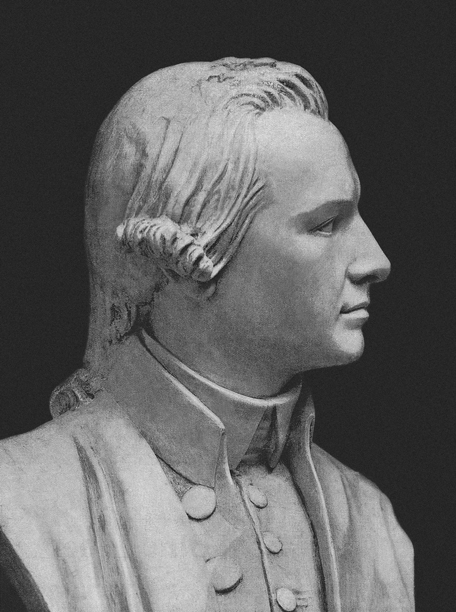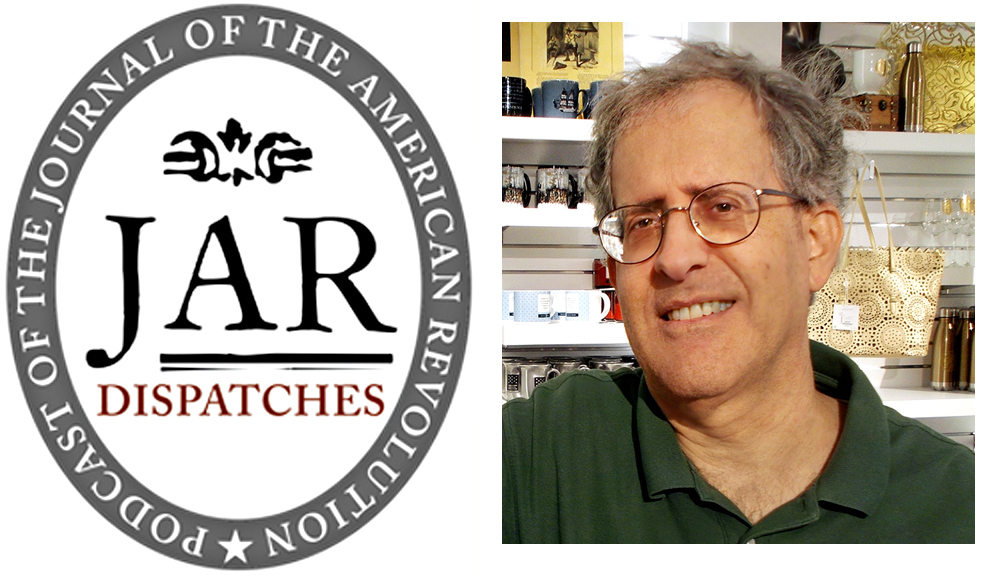About Michael Schellhammer:
Michael Schellhammer is a former U.S. Army infantry, intelligence, and civil affairs officer. He served in the Persian Gulf War, Haiti, Bosnia, and Iraq. His work has appeared in The Washington Post, The Washington Times and The Military Intelligence Professional Bulletin. He is the author of The 83rd Pennsylvania Volunteers in the Civil War (McFarland, 2003), and George Washington and the Final British Campaign for the Hudson River, 1779 (McFarland, 2012).
What inspired you to start researching and writing about the Revolution?
My father loved history and he taught me about Washington’s strengths as a commander and leader. Thanks to him I grew up reading great fiction on the Revolution like Kenneth Roberts’s Rabble in Arms and Oliver Wiswell. I’ve continued to find the Revolution a fascinating era because it was such a precarious conflict – the American colonies could have lost their struggle at more than one point during the war, yet prevailed through an amazing combination of perseverance, strong leadership, and luck. Plus, the first “A” I can ever remember receiving in school was for portraying Nathan Hale in a Revolutionary War class in the third grade. I’m pretty sure that I had the most accurate homemade Continental Army uniform ever worn by a student at Darley Road Elementary School.
What are your go-to research resources?
Robert K. Wright’s classic study The Continental Army is my first stop in understanding the structure of the American forces. For the big picture, context and dynamics of Revolutionary War events I usually refer to James Ferling’s Almost a Miracle. To understand Washington’s military experience I turn to Edward Lengel’s General George Washington. “The Internet Archive” at https://archive.org and Google Books all have fantastic primary sources.
Which of your own JAR articles is your favorite or most rewarding? Why?
It was fun to write about Alexander Hamilton’s military exploits. I think its easy to think of him only as an intellectual Founder. It was great to talk about how, before he became that gentlemanly visage on the 10-dollar bill, he was a killer on the battlefield.
Besides your own contributions, what other JAR articles do you most enjoy? Why?
Ray Raphael’s Mythbuster pieces are always terrific. His articles on Paul Revere’s Ride, as well as those on the same topic from J.L. Bell, Derek Beck, and Todd Andrlik are all well-written, impeccably researched and very informative. I always keep copies with me of Hugh Harrington’s Battle Wounds: Never Pull an Arrow Out of a Body and How to Treat a Scalped Head, because they’re great pieces and that information may come in handy at any time. I sometimes read from those two pieces aloud at family holiday meals.
What books about the American Revolution do you most often recommend?
Definitely Ferling’s Almost a Miracle, James Flexner’s Washington: The Indispensable Man, and David Hackett Fischer’s Washington’s Crossing and Paul Revere’s Ride. I also always recommend any book by Thomas Fleming.
What new projects are you currently working on?
Aaron Burr had some very interesting service as a Continental officer so I’m working on piece about him. Since I’m starting graduate school soon I’m also practicing multi-tasking skills, like reading homework while walking my dog.
What other hobbies/interests do you enjoy?
I find sailing is an interesting mix of history and sport. Years ago, crewing a 19th century schooner in Alexandria, Virginia, I learned the age-old mariner skills of splicing rope, hauling up sails, climbing aloft, caulking decks, and getting sunburned. My wife is a real sailor and we’ve sailed on the Chesapeake Bay, Long Island Sound, and even once on the Bay of Naples in Italy. I’m actually terrified of the water and spent much of those sails in fear of the boats capsizing. This year one of my goals is to get a new pastime.
Why is Journal of the American Revolution important to you?
I think the Revolutionary period is often misunderstood today and even hijacked for political agendas. The JAR presents the Revolution’s history with context and analysis backed up by solid research, so people can reach their own conclusions and comparisons to today’s world. And thanks to the JAR, I’ve been able to share information on topics close to my heart and have enjoyed fascinating discussions with readers and the other writers. I am immensely proud of being part of the JAR.










14 Comments
I’m happy to see this piece on Michael’s contributions to JAR. Being an avid NYer, I very much enjoyed his book, George Washington and the Final British Campaign for the Hudson River. At first I groused at the price of the book but it covered a year and geographic area that I find most interesting. When I finished the book, I thought it was cheaply bought. The coverage of the Battle of Stoney Point, alone, is worth the read and the complete book is well-researched and highly readable. I also enjoyed his JAR ‘Dear Mr. History’ contribution on John Glover. In fact, whenever his byline appears it’s a good bet you’ll enjoy the article and learn a good deal you thought you knew about the particular subject but didn’t.
Thanks SPM! I am deeply honored.
Mike is not only a skilled researcher, but also writes with a humor and flow that always makes his articles a pleasure to read. He is one of only a few willing to explore the period from an intelligence perspective since the information is usually sparse, often false on purpose and requires a knowledge of the profession to put it into perspective, and give it an interesting story line.
I also liked the dog and rug in the photo.
Ken my friend you are too kind. My dog would send his thanks too but he’s busy researching my next piece.
Great interview, Michael! Quite enjoyable.
Thanks Thomas!
Mike, I could not agree with you more that the Revolutionary period is often misinterpreted which can lead to inappropriate parallels to today’s political ,cultural and social issues. This is especially true in terms of the liberal versus conservative national discourse.
I also look forward to your article on Aaron Burr’s revolutionary service.
Many thanks Gene. For me, how different groups use or abuse the history of the Revolutionary era is a reminder to search for the correct context and meaning of the events and especially the words of the time. Those in technical fields have a saying, “if you torture the data long enough it will confess,” and writing history is often sort of the same.
A very enjoyable interview, Mike! I can just picture you now doing graduate school homework while walking the dog. Your lists of reference books reflect your uncompromising attitude toward solid, primary sources. Your writing style is very enjoyable and engaging, and I hope grad school’s gain is not JAR’s loss. Looking forward to your articles on Burr and Hamilton… in an un-dueling sense.
Thank you again for your contributions!
Thanks very much John! You know, the dog and me, they call us Peabody and Sherman.
So it’s “Mr. History and the Wayback Machine”?
“It was great to talk about how, before he became that gentlemanly visage on the 20-dollar bill, he was a killer on the battlefield.”
10-dollar bill, I think you mean.
Good catch, Chip. You’re absolutely right. We made the change in the interview. Thank you.
Thanks for the article about TURN, Michael. I don’t know where to post this, but one detail from Season 2 Episode 10, The Battle of Monmouth that has gone unnoticed, I believe, is their inclusion of the reproduction of two authentic American regimental banners from the Revolution. One from Rhode Island, the earliest with stripes, and Col. Abraham Buford’s Virginia Regiment’s PERSEVERANDO flag, the earliest surviving example of a field of stars. Both were sold at Sotheby’s in 2006 by Banister Tarleton’s 5th-great nephew. Col. Buford was my 5th-great uncle and Tarleton took the regimental colors at the Battle of the Waxhaws, when he massacred half of Buford’s command. Called “Bloody Ban” after that. Nice to see the colors flying again, if only in film and appropriately at the end of the battle to emphasis Washington’s perseverance before engaging.